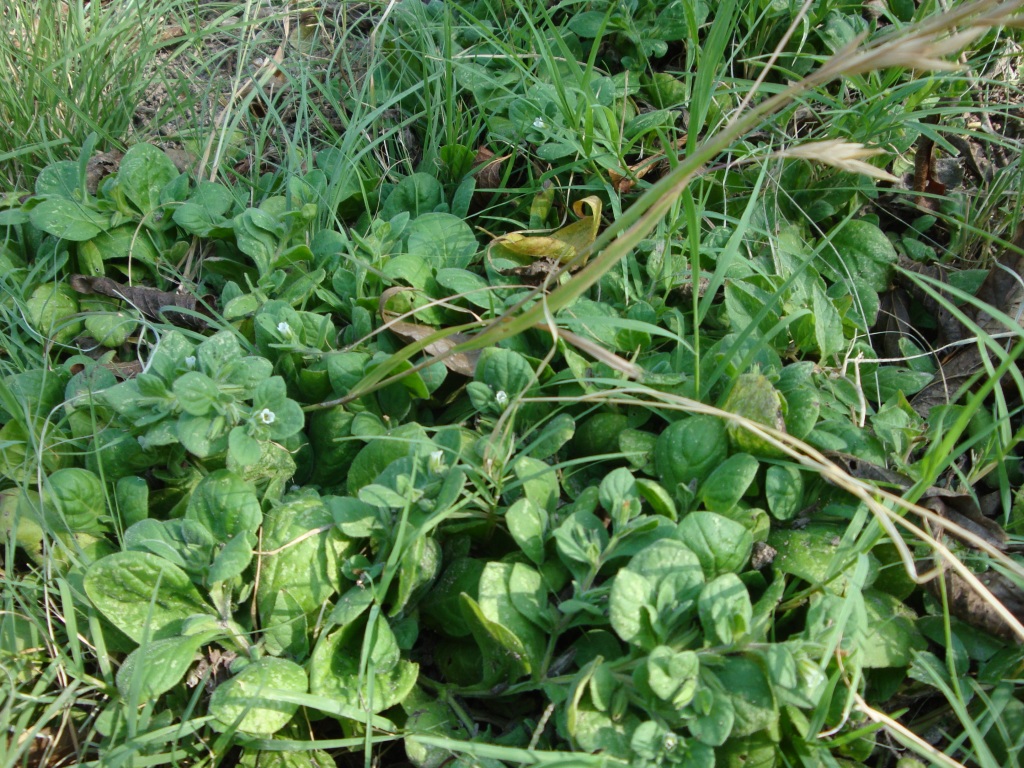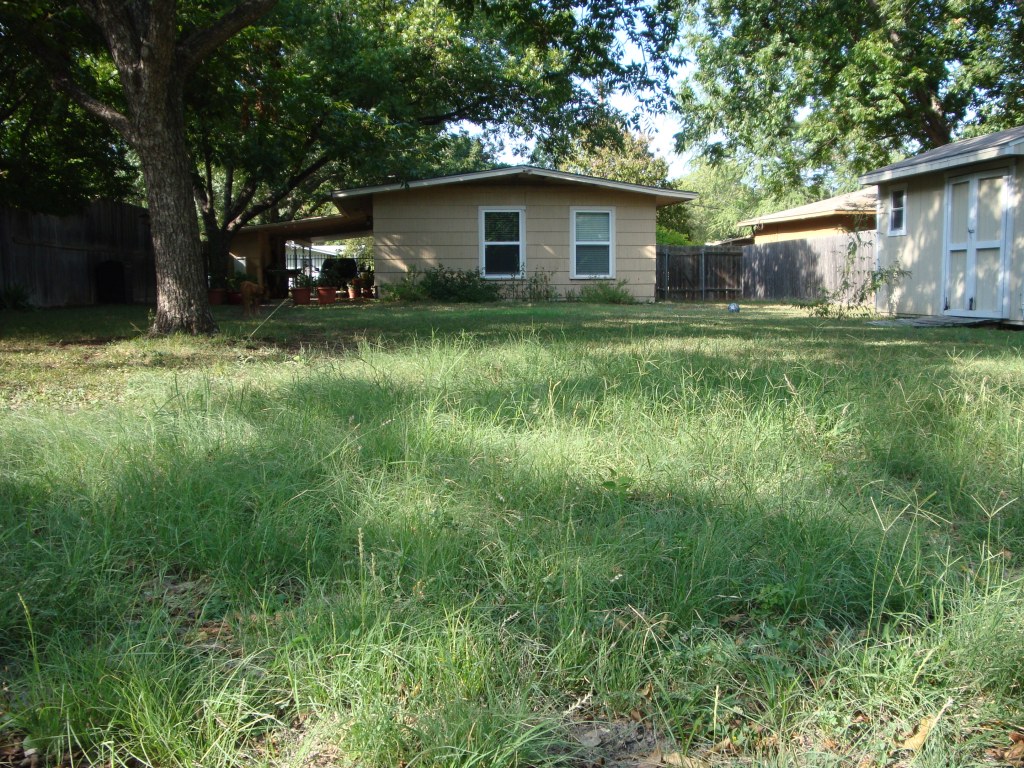My husband and I live in a small house - a cute house, but small by today's standards. It was built in 1955 and for over 40 years was occupied by the original owners. It's amazing to think 1000 square feet and 1 bathroom was totally the norm for a family with multiple children. The upside is that our tiny little abode has left us with a large amount of yard space on a quarter acre lot. The backyard pretty much sold me on the house - despite the baseball themed wallpaper in the bathroom and peach tile countertops in the kitchen.
Over the past 7 years, I've built a large-ish, successful-ish vegetable garden and sporadically planted some native shrubs and flowers around the house and fence line. Lawn maintenance, however, has not been at the top of my list. In 2005, I had some nice, lush weed coverage across the backyard that worked just fine for me and the dog (no husband in the picture yet).
It took a couple of years before I noticed the small patch of St. Augustine grass in the back yard had shrunk to about half of its original coverage. I guess you're supposed to water it? In my defense, I was a young, first-time homeowner and I come from the country.
Fast forward several years and we are in the middle of a drought with a lawn that has already suffered years of neglect. I still had some pretty decent St. Augustine coverage in the front yard due to the shade from a massive red oak. The backyard, however - yikes. Grapes of Wrath: A Suburban Sequel. As in, serious dust-bowl reenactment. The dog would run across the yard and leave a trail of dust in her wake reminiscent of Pigpen from the Peanuts cartoons. With the temperature 100+ degrees everyday of last summer, no amount of watering really helped the situation.
This Spring, we had a truckload of revitalizer compost (Natural Gardener, cha-ching!) delivered to the house in an effort to become responsible lawn people. We top dressed every inch of our yard and the compost, combined with several great rains, really perked up the yard. We even had some Bermuda appear in the backyard among all of my trusty weed friends. Except for the barren wasteland along the back fence line where the soil is terrible and subjected to full, direct sun. Even topdressing didn't convince any of my lovely backyard weeds to grow here.
At this point, we undertook the second project and the actually point of this guest post: seeding the yard with Habiturf. The seed is available through the LBJ Wildflower Center and Douglas King Seeds and is meant to simulate a prairie environment with a mix of short-grass seed including buffalograss, blue grama, and curly mesquite.
Since the soil was so terrible we decided to till about 4-inches of compost directly into the soil before seeding. An important note here: we did this in mid-March, way too early. We raked the soil out as evenly as possible and then I proceeded to sow the seed by hand. The seed between the species varies significantely in size and I couldn't find the right setting on our hand crank that would evenly distribute the mix. My own hand didn't do a much better job. All my downwind neighbors owe me a heart-felt thank you for the expensive seed I gifted them.
We then proceeded to water the seeded area for the next 10 days just like the directions said and, waaaaait for it - nothing happened! Yeah, because it was cold outside. Hmmm. Repeat and, waaaaait for it - nothing happened again! About mid to late-April, we noticed little patches of grass growing up through the soil that received the most sun but absolutely nothing in the areas that received partial shade. We also noticed the cutest little flowers on some of the grass. Funnily enough, it didn't even look much like grass. We decided it was probably harmless and then left town for three weeks and forgot all about our lawn-improvement efforts. During this time, it rained for a week or so straight (hooray rain!) and the whole yard went gang-busters.
Turns out, that little grass with the pretty flowers LOVED all the rain and it didn't look like grass because it wasn't. It wasn't even grass. Even though we put enough grass seed in that soil to pay for a future kid's braces, what grew there wasn't even grass. It was a WEED. Isn't that FUNNY! Things got really hilarious, when we noticed little grass shoots being choked out and suffocated by this weed. We were practically crying with laughter upon the discover that these weeds have a big tap root and couldn't be coaxed gently from their little usurping places. And those little usurping places covered the entire seeded area.
After a thorough search of the internet, we think this is a plantain weed. It spread quickly but only in the disturbed portions of the yard. Everything that had been topdressed was untouched. So, we rolled up our sleeves and starting pulling out every one of those roots by hand. The soil had to be really moist to pull up the entire tap root and we had to be careful to avoid pulling grass with the weed. We tackled it every morning for several weeks, probably getting a square foot weeded in every sitting. Given that we had approximately 1000 square feet to weed, progress was slow. The effort became meditative in nature. Enlightenment began around week 3 when Weed Buddha showed us the futility of our efforts. And with understanding, came peace.
I would say about a third of the seeded area is now free of plantain weed and has a substantial amount of prairie grass established. We’ve let the grass go to seed in an effort to fill in the barren spots. Some Bermuda has crept in but we’re ok with it. The goal was coverage, after all. The sunny days at 100+ degrees appear to be burning off the remaining plantain weed and the small portion of seeded area in shade never really established grass anyway. Even though we didn't get all of the weeds pulled, we're hoping our efforts will help curb the regrowth next year.
We water the area every other week and, so far, it has stayed green. This is a sharp contrast to the browning bermuda grass next to the house which we water once every week.
All in all, it was a good experiment and our little prairie patch will hopefully grow and reseed with time. Instant gratification is just not in the cards for gardeners. That's why we have potato chips.







